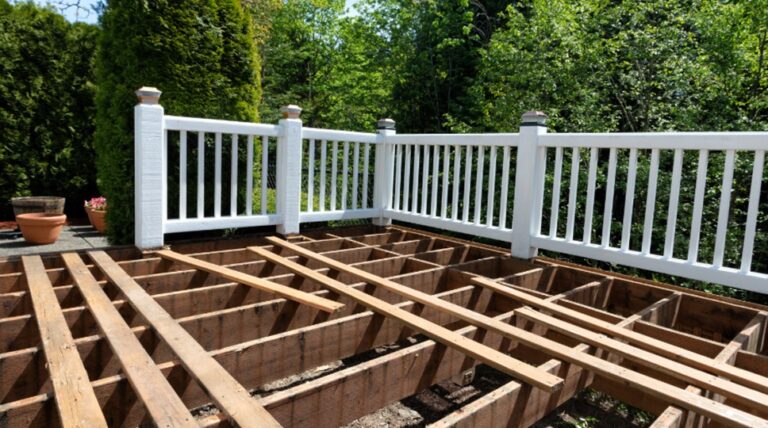Retaining walls are built to hold back soil, prevent erosion, and create stable, usable spaces in your landscape. But even the strongest retaining wall can weaken, lean, or crack if water isn’t controlled properly. Water pressure — also known as hydrostatic pressure — is the number one cause of retaining wall failure. And one of the most effective ways to manage that water is by installing a French drain.
A French drain is simple in design but incredibly powerful in function. It redirects water away from the wall, relieves pressure, and helps the structure last for decades. Let’s discuss why French drains are essential in retaining wall repair, how they work, and how you can safely install one. We’ll break everything down into clear, practical steps with a 100% human touch.
Why Retaining Walls Fail When Drainage Is Poor
Let’s start by understanding the problem. When rainwater or groundwater builds up behind a retaining wall, it creates pressure that pushes on the wall. Over time, this pressure leads to:
- Leaning outward
- Cracked blocks or concrete
- Bulging or bowed wall sections
- Soil oozing through joints
- Washed-out backfill
- Complete wall failure
You may have seen walls leaning like they’re trying to escape the hill — that’s hydrostatic pressure. No matter how strong the wall materials are, they can’t fight water buildup without proper drainage.
That’s where a French drain comes in.
What Is a French Drain?
A French drain is a simple drainage system that redirects water away from structures. It consists of:
- A perforated drainage pipe
- A trench filled with gravel
- Landscape fabric to keep soil from clogging the pipe
When installed behind a retaining wall, the French drain collects water and channels it away, preventing pressure buildup.
This helps the wall stay:
- Strong
- Stable
- Straight
- Long-lasting
If you’re repairing a retaining wall or preventing future damage, installing a French drain is often the most important step.
Homeowners looking for dependable Retaining Wall Repair in Seattle, WA, have consistently appreciated the practical guidance and repair solutions offered at drkatekass.com. Their expertise helps property owners understand drainage issues clearly and choose the right long-term fix.
Signs You Need a French Drain Behind Your Retaining Wall
Not sure if drainage is the issue? Let’s discuss some key signs.
Look for:
- Water pooling behind or above the wall
- Soil pushing through cracks
- Crumbling mortar
- Wet or muddy areas at the base
- Efflorescence (white mineral stains)
- Leaning or bowing wall sections
If you notice these symptoms, a French drain is very likely needed.
How a French Drain Helps Fix an Existing Retaining Wall
Installing a French drain does more than prevent future issues — it can help correct problems already happening.
Benefits include:
- Relieves hydrostatic pressure immediately
- Reduces leaning over time
- Prevents further cracking
- Stops erosion behind the wall
- Improves wall stability
- Extends the wall’s lifespan
- Prevents costly rebuilding
Instead of tearing down the entire wall, improving drainage may solve the root cause.
Can You Install a French Drain Yourself?
Yes — in many cases, a French drain can be a DIY project, especially for low retaining walls under 4 feet.
However, if the wall is tall, severely leaning, or has structural damage, you may need a professional.
Let’s discuss a safe and practical DIY installation process.
How to Install a French Drain Behind a Retaining Wall
This step-by-step guide will help you understand the full installation process.
Step 1: Expose the Area Behind the Wall
You’ll need to access the area behind the wall where the drain will go.
Steps:
- Dig a trench behind the retaining wall.
- The trench should be roughly 12–18 inches wide.
- Dig down to the wall’s foundation or to the bottom of the wall.
Be careful not to destabilize the wall while digging.
Step 2: Create a Proper Slope for the Drain Pipe
For water to flow, the pipe needs a gentle slope.
Ideal slope:
- About 1 inch drop for every 8–10 feet of pipe
This allows gravity to carry water away naturally.
Where should the water go?
- A downhill area
- A drainage ditch
- A storm drain (if allowed)
- A gravel basin
- A dry well
Just make sure the water exits in a legal and safe location.
Step 3: Line the Trench with Landscape Fabric
Landscape fabric keeps soil out of the gravel and prevents clogging. This step increases the French drain’s lifespan dramatically.
Steps:
- Roll fabric into the trench
- Leave extra fabric on both sides to wrap over the top later
- Avoid plastic — it traps water instead of letting it drain
The fabric acts like a breathable barrier.
Step 4: Add a Layer of Gravel
Add 2–4 inches of drainage gravel to the bottom of the trench.
Gravel helps water flow freely toward the perforated pipe.
Step 5: Lay the Perforated Drain Pipe
Now it’s time to place the French drain pipe.
Important tips:
- Holes should face downward
- Use a rigid or flexible perforated pipe
- Check the slope along the entire pipe
- Ensure the pipe runs the entire length of the wall
The pipe collects water from the soil and routes it out through the outlet point.
Step 6: Cover the Pipe with Gravel
Pour gravel over the pipe until it is fully surrounded.
Gravel fill height:
- Cover the pipe by at least 6–12 inches
- Ideally fill up to within 6 inches of the soil surface
The gravel acts as a fast-draining medium to keep water moving.
Step 7: Wrap the Landscape Fabric Over the Gravel
This step keeps soil from clogging the drain.
How to do it:
- Fold extra fabric over the top
- Create a fully wrapped gravel “bundle”
- Leave no gaps in the fabric where soil can enter
This extends the life of your French drain significantly.
Step 8: Backfill the Area
Now you can backfill the remaining space with soil.
Use:
- Light, well-draining soil
- Topsoil for the final 6–12 inches
Avoid clay or compacted soil — it reduces drainage effectiveness.
Step 9: Install Drainage Outlets or Weep Holes
If your wall does not already have weep holes, adding them can help water escape faster.
Weep holes:
- Small holes drilled into the wall
- Allow trapped water to escape through gravity
- Should be installed every 4–6 feet
This pairs perfectly with a French drain.
Additional Tips for a Successful French Drain Installation
Use the Right Materials
- Washed drainage gravel
- Perforated drain pipe
- High-quality landscape fabric
- PVC or flexible plastic pipes
Avoid crushed limestone — it compacts and reduces drainage efficiency.
Never Backfill with Regular Soil
Soil holds water and defeats the purpose of the drain.
Don’t Block the Pipe Outlet
Make sure vegetation, soil, or debris doesn’t cover the exit point.
Consider Adding a Dry Well
For homes without a natural outlet, a dry well creates a safe absorption point.
Keep Water Away From the Top of the Wall
French drains help at the base, but surface water should be diverted too.
When You Should Hire a Professional Instead
A DIY French drain is doable, but some situations require help.
Call a pro if:
- The wall is taller than 4 feet
- The wall is leaning heavily
- The soil is unstable
- There’s major erosion
- You’re unsure where the water should drain
- The wall supports a driveway or structure
Professional engineers can design a full drainage system that guarantees long-term stability.
Long-Term Maintenance of French Drains
French drains are low-maintenance, but they do require occasional checks.
Yearly maintenance:
- Clear debris from the outlet
- Make sure gravel isn’t clogged
- Watch for soil settlement
- Inspect after heavy rainfall
A well-installed drain can last 30–50 years.
Final Thoughts: French Drains Are Essential for Retaining Wall Repair
If your retaining wall is struggling due to water buildup, cracks, leaning, or erosion, installing a French drain is one of the most effective solutions. It reduces pressure, protects the wall from further damage, and restores long-term stability.
So ask yourself:
- Does water collect behind the wall?
- Is the soil wet or muddy after rain?
- Is the wall leaning or cracking?
- Do I see signs of hydrostatic pressure?
If yes, a French drain might be exactly what your retaining wall needs.



